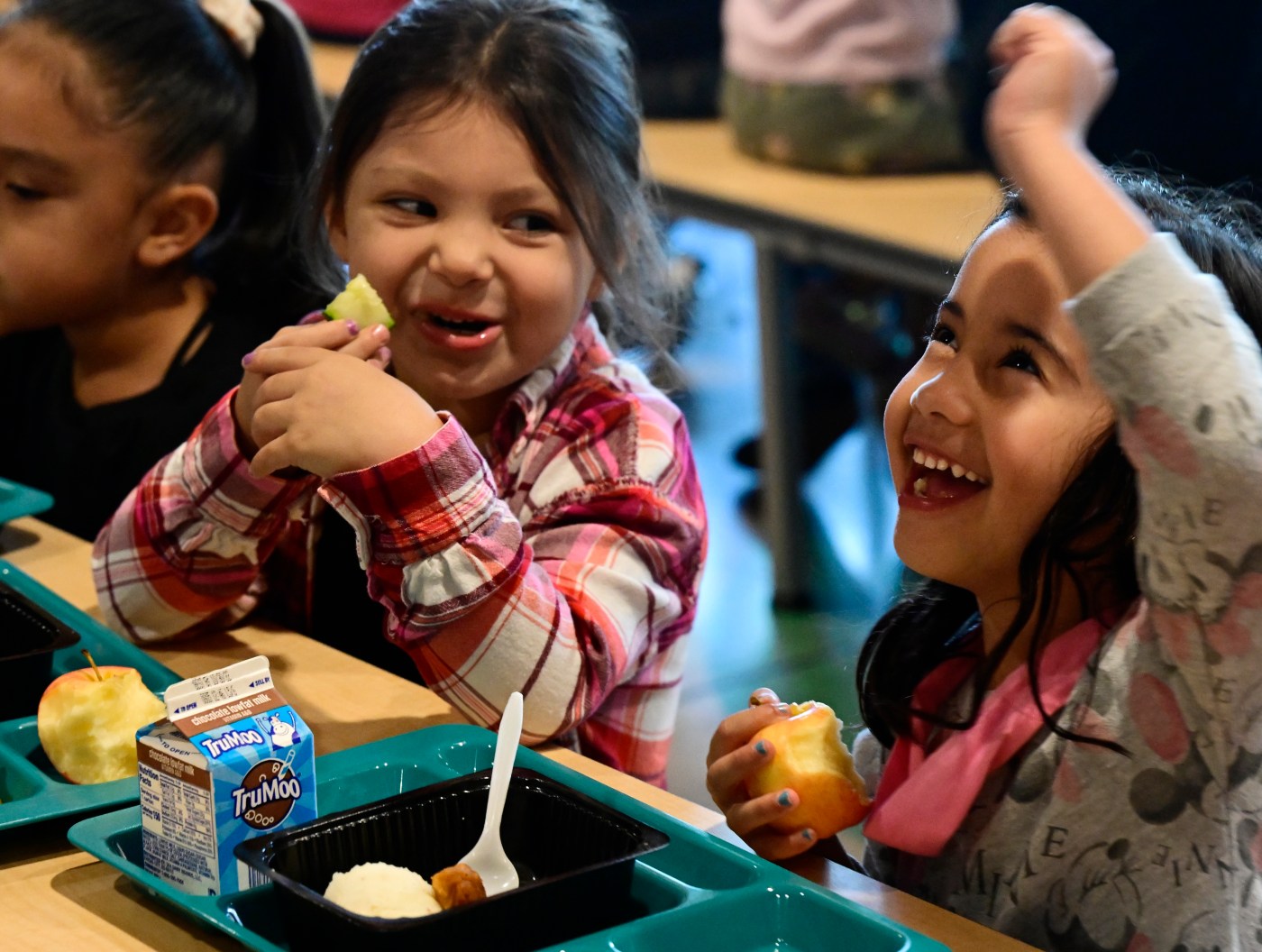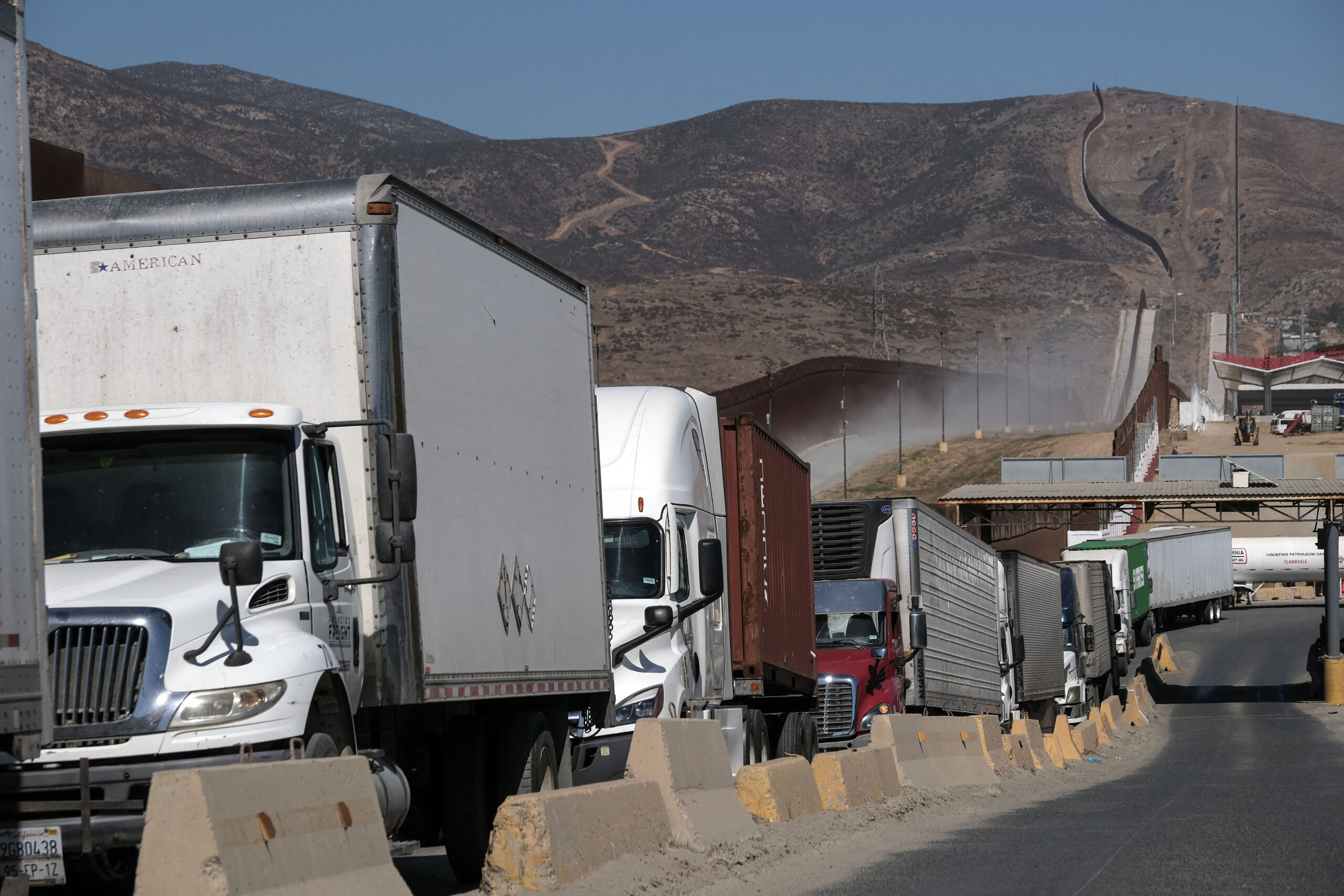Three years ago, Colorado voters overwhelmingly said yes to raising taxes on the wealthy to pay for free school meals for all. Every eligible school district signed up for the program, and students ate 25 million more school meals than the year before.
But food prices continued to rise across the country, and state officials quickly realized the program needed a lot more money. The rising price tag—$50 million above estimates in each of its first two years—puts the program, known as Healthy School Meals for All, at a crossroads.
Propositions LL and MM, on the ballot in November’s election, will determine the future of the universal school meals program. Advocates say a “yes” vote on both will allow the program to continue with enough funding to fulfill all its initial promises.
**What Propositions LL and MM Do**
– **Proposition LL** allows the state to keep and spend tax dollars collected above the projections approved with Proposition FF in 2022.
– **Proposition MM** will expand the tax on high-income households to bolster the program.
– Additionally, MM will help fund the state’s share of the Supplemental Nutritional Assistance Program (SNAP) following changes to federal eligibility requirements.
Healthy School Meals for All is funded by limiting write-offs that Coloradans making more than $300,000 per year can claim. Proposition LL would allow the state to keep about $12.4 million in taxes collected over the initial expectations set in the 2022 measure.
Proposition MM would further limit these write-offs—from $16,000 now for joint filers at that income level to $2,000—effectively raising taxes on high-income Colorado taxpayers by an average of $535 a year. Importantly, taxes for Coloradans making less than $300,000 per year would remain unchanged. The tax increase would affect less than 6% of Colorado taxpayers.
**What Happens if LL and MM Fail?**
If both measures fail, the Healthy School Meals for All Program will be scaled back. It would revert to a program that only gives universal school meals to low-income schools and free meals to low-income students at wealthier schools—a system similar to what preceded it.
“Without LL and MM, hunger will rise sharply across our state,” said Anya Rose, director of public policy for Hunger Free Colorado, a key backer of the proposals. She added, “We know kids were going hungry at school. We’ll return to a method where many students are not accessing meals at school—either because their families can’t afford it or because they’re facing that fear of shame and stigma.”
**Program Success to Date**
In the 2023-2024 school year—the first with Healthy School Meals for All in place and the most recent data available—schools across Colorado reported serving 8 million more breakfasts and more than 16 million more lunches than the year before. These represent respective increases of 37% and 30%, according to a state report.
Hunger Free Colorado estimates the program has saved families around $1,250 per child annually in school meal costs.
Emma Ansara, a mother of three from south Denver, hasn’t tracked her exact savings but says the free meals have eased her family’s finances as her three sons attended school. “I’ve appreciated not worrying about surprise over-budget bills when the school term ends and cafeteria bills come due,” she said.
The free meals have also acted as a safety net while she juggles her sons’ schedules alongside her commitments as a Ph.D. student and nurse practitioner. Sometimes lunch planning falls through amid their busy mornings, but knowing the other kids in their classrooms—and the support from the community voting for Healthy School Meals—makes a difference.
“Every kid being sure of a meal at school, including mine, helps create a better learning environment for everyone,” Ansara said. “We have a lot of families in Colorado who are food insecure. This seems like a really thoughtful and planful way to meet kids where they are. Them having access to food throughout the school day really shows up in a lot of ways—both in their physical health and their learning.” She added, “Learning is a communal process.”
**Opposition to the Measures**
LL and MM face scant formal opposition. Taxpayers for a Better Deal, an issue committee linked with the conservative think tank Independence Institute, registered opposition but reported raising and spending no funds as of the most recent filing period (Sept. 30).
In a statement opposing the measures, the group referred to Healthy School Meals for All as a “failed experiment,” criticized it as “financially unsound,” and called it a case of “classic bracket creep,” where inflation pushes more families into the tax bracket that funds the program.
Jon Caldara, the institute’s president, reiterated earlier arguments against Proposition FF in 2022, stating, “Yes, lower-income folks should get free meals. But kids whose families can afford school lunch shouldn’t have taxpayers foot the bill.”
He added, “Why are we taxing wealthy people to buy free lunches for the kids of just slightly less wealthy people? Of course, children of poorer families should get a free lunch. But buying lunch for those who can afford it isn’t charity. It’s theft.”
**Support for the Measures**
Supporters have formed Keep Kids Fed Colorado, a committee linked to Hunger Free Colorado, which has reported raising $683,000 to support the measures.
Anya Rose emphasized that the program’s funding targets those most able to afford the higher tax rate. She also pointed out that even high-income families would save money if they have children in public schools.
“This is a time when folks are facing an affordability crunch, but that’s why it’s really important there’s an equitable mechanism here,” Rose said.
**The Importance of the Program Beyond Funding**
Shannon Thompson, public policy and legislative chair for the Colorado School Nutrition Association, highlighted that the extra funding would help keep school meals healthy and made from scratch. Cutting back would mean relying more heavily on heat-and-serve meals and other prepared foods.
The program also aims to use more locally grown foods—a goal stifled previously by lack of funds.
Having the resources to pay for more staff and better training in what Thompson calls the state’s “biggest restaurant chain” means better, healthier meals for students.
Thompson pushed back on claims that free meals have led to more food waste. According to her, long lines and short lunch periods cause students to discard uneaten food—not the fact that meals are free.
This finding was echoed by a legislative report after the program’s inaugural year. Supporters say food waste is a side effect of the program’s success in drawing more kids to eat school meals.
“Right now, the original Proposition FF was so successful that it cost the state of Colorado more than anticipated. That success was really important to show that kids need these meals,” Thompson said.
“If Proposition LL and MM don’t pass, it’s going to reduce that equitable playing field that we’ve made over the past couple of years for students.”
—
For Colorado voters, the decision on Propositions LL and MM will shape how the state addresses child hunger and supports families in the years ahead. Ensuring every child has access to healthy meals at school remains central to building a stronger, healthier Colorado community.
https://www.denverpost.com/2025/10/25/propositions-ll-mm-healthy-school-meals-for-all/



